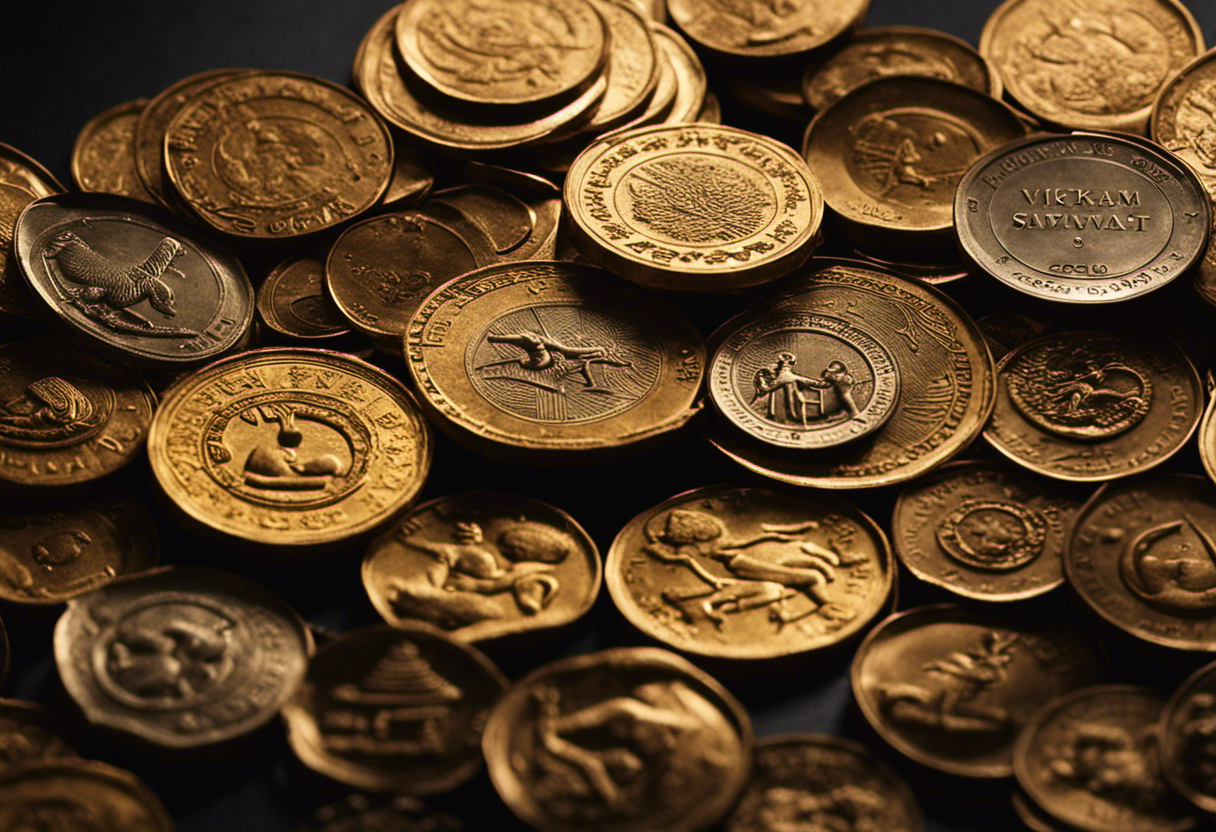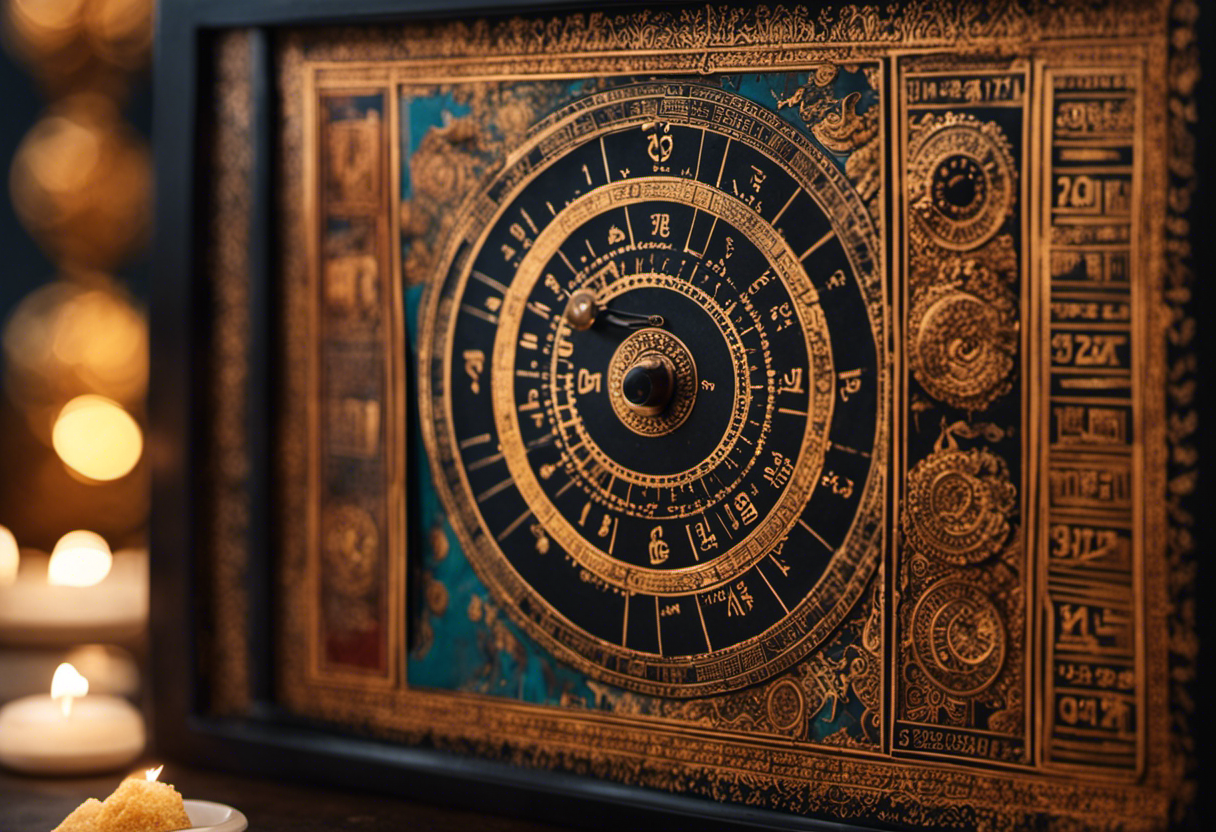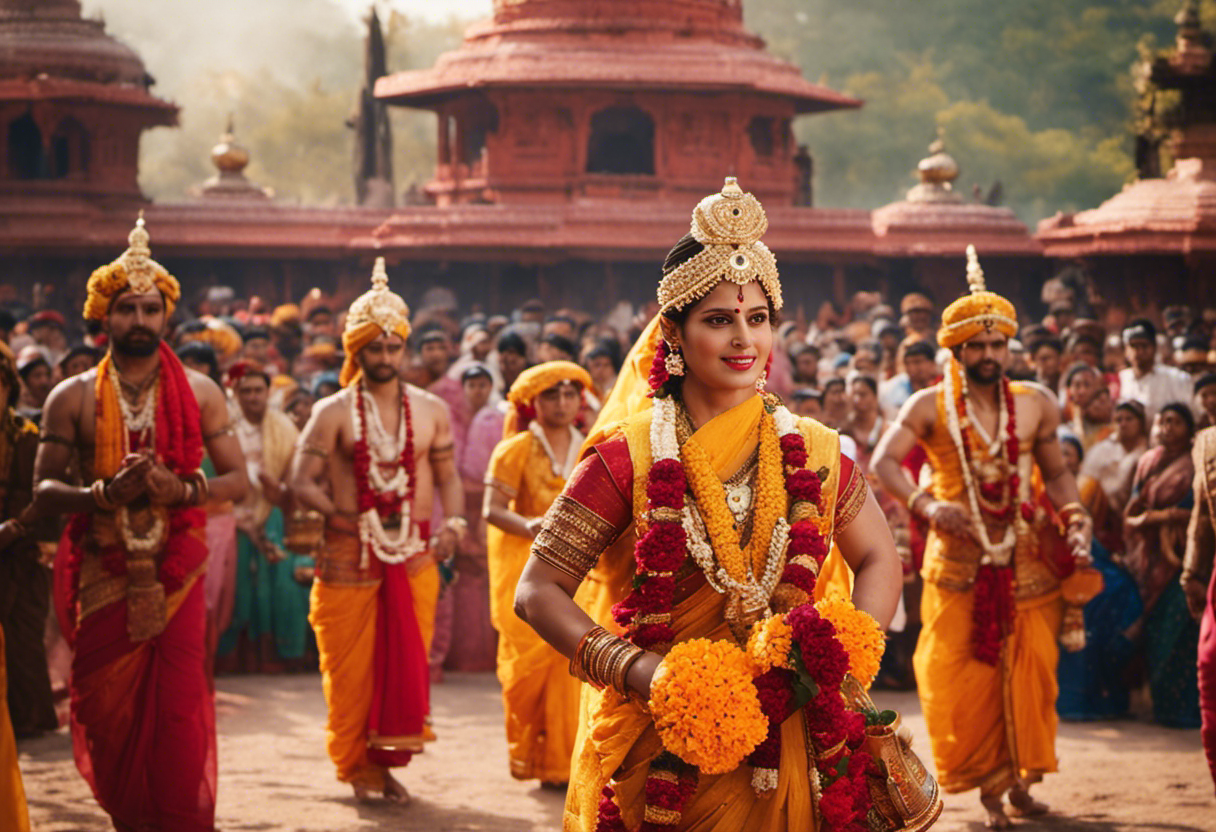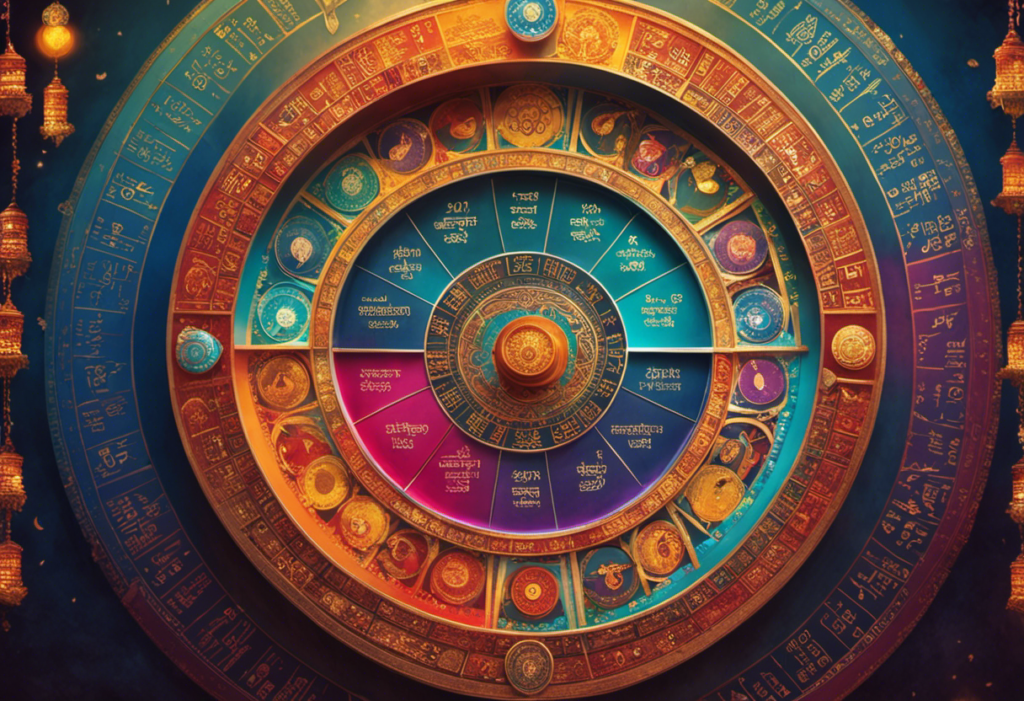Step into the rich tapestry of time as we delve into the captivating world of Vikram Samvat and its intricate calendar system.
Among its many fascinating aspects, the concept of Pakshas stands out. These lunar phases hold great cultural and religious significance, guiding the lives and rituals of countless individuals.
In this article, we will explore the origin, calculation, and profound importance of Pakshas in Vikram Samvat, shedding light on a timeless tradition that continues to shape our understanding of time.
Key Takeaways
- Vikram Samvat is one of the oldest calendars in the world, established by King Vikramaditya of Ujjain in 57 BCE.
- The lunar calendar system of Vikram Samvat divides the month into two pakshas: Shukla Paksha (bright half) and Krishna Paksha (dark half).
- Shukla Paksha symbolizes growth and positivity, while Krishna Paksha represents introspection and spiritual growth.
- Pakshas hold immense importance in determining auspicious and inauspicious times, guiding religious ceremonies, pujas, and fasts.
The Origin and History of Vikram Samvat


The origin of Vikram Samvat, a Hindu calendar system, can be traced back to ancient times in the Indian subcontinent. It was established by King Vikramaditya of Ujjain in 57 BCE, making it one of the oldest calendars in the world. The evolution of Vikram Samvat can be seen through various modifications and additions made over the centuries.
Initially, Vikram Samvat was a lunar calendar based on the phases of the moon. However, it later incorporated solar calculations to align with the solar year. This integration of lunar and solar aspects gave rise to the concept of Pakshas, which are the two halves of a lunar month.
Vikram Samvat has had a significant impact on Indian society. It served as a basis for determining important religious and social events, including festivals and auspicious days. It also played a crucial role in agricultural practices, helping farmers determine the best time for sowing and harvesting crops.
Furthermore, Vikram Samvat has been instrumental in documenting historical events and dating ancient manuscripts. It continues to be widely used in various regions of India, showcasing its enduring influence on the country’s cultural and religious traditions.
The Lunar Calendar System of Vikram Samvat


A key aspect of the lunar calendar system in Vikram Samvat is the division of each lunar month into two pakshas, known as the bright and dark halves. The lunar phases play a significant role in determining the dates and events within the Vikram Samvat calendar.
The bright half, known as Shukla Paksha, begins with the new moon and lasts for fifteen days until the full moon. During this phase, the moon’s illumination increases, symbolizing growth and positivity. Shukla Paksha is considered auspicious for various activities, such as starting new ventures, weddings, and religious ceremonies.
On the other hand, the dark half, known as Krishna Paksha, starts after the full moon and continues for fifteen days until the next new moon. As the moon’s illumination decreases during this phase, it represents introspection and spiritual growth. Krishna Paksha is believed to be a time of reflection, purification, and letting go of negative energies.
These lunar phases hold great significance in astrology. Astrologers analyze the positioning of celestial bodies during specific lunar phases to make predictions and offer guidance. The Vikram Samvat lunar calendar system allows individuals to align their actions and decisions with the cosmic energies of each paksha, harnessing the potential for growth and transformation.
The Significance of Pakshas in Vikram Samvat


With their distinct qualities and influences, the pakshas in Vikram Samvat play a crucial role in shaping the calendar system and guiding individuals in their actions and decisions. The significance of pakshas in Vikram Samvat lies in their importance in religious and social rituals.
The Vikram Samvat calendar follows a lunar system, and it is divided into two pakshas – Shukla Paksha (bright fortnight) and Krishna Paksha (dark fortnight). Each paksha lasts for approximately 15 days, with the waxing moon marking the beginning of Shukla Paksha and the waning moon marking the start of Krishna Paksha.
The pakshas hold immense importance in religious rituals and festivals observed by Hindus. The Shukla Paksha is considered auspicious, and many religious ceremonies, pujas, and fasts are performed during this period. It is believed that starting any new venture or undertaking during the Shukla Paksha brings prosperity and success.
On the other hand, the Krishna Paksha is associated with introspection, penance, and letting go of negative energies. Many individuals observe fasts and engage in spiritual practices during this period. The significance of the pakshas in Vikram Samvat is also reflected in the timing of various festivals, such as Navratri and Diwali, which are celebrated during specific pakshas.
The Division and Calculation of Pakshas in Vikram Samvat


To understand the division and calculation of pakshas in Vikram Samvat, it is important to delve into the lunar system and its influence on the calendar. The Vikram Samvat calendar is based on the lunar system, which means that the pakshas are determined by the phases of the moon.
Traditionally, there are two methods used for the calculation of pakshas in Vikram Samvat. The first method is known as the Purnimanta system, which considers the full moon as the beginning of the month. In this system, the paksha changes when the moon transitions from its waxing phase to its waning phase or vice versa.
The second method is known as the Amanta system, which considers the new moon as the beginning of the month. In this system, the paksha changes when the moon transitions from its waning phase to its waxing phase or vice versa.
These calculation methods have been followed for centuries and are deeply rooted in traditional practices. They ensure that the Vikram Samvat calendar accurately reflects the lunar cycles, allowing for the proper observation of religious festivals and auspicious occasions.
The division and calculation of pakshas in Vikram Samvat are essential for maintaining the accuracy and integrity of the calendar system, preserving the cultural and religious practices associated with it.
The Cultural and Religious Significance of Pakshas in Vikram Samvat


The cultural and religious significance of pakshas in Vikram Samvat is evident in the rich traditions and practices associated with these lunar phases. Pakshas play a crucial role in determining auspicious and inauspicious times for various festivals and rituals in Vikram Samvat.
In Vikram Samvat, which follows the Hindu lunar calendar, each month is divided into two pakshas – the Shukla Paksha (waxing phase) and the Krishna Paksha (waning phase). The Shukla Paksha is considered auspicious and is associated with growth and positivity. On the other hand, the Krishna Paksha is believed to be inauspicious and is associated with decline and negativity.
The importance of pakshas in Vikram Samvat can be seen in the timing of religious festivals and rituals. For example, the festival of Diwali, which marks the victory of light over darkness, is celebrated on the new moon day of the Krishna Paksha in the month of Kartik. Similarly, the festival of Navratri, dedicated to the worship of the goddess Durga, is observed during the Shukla Paksha of the month of Ashwin.
Moreover, the role of pakshas in determining auspicious and inauspicious times is significant in Vikram Samvat. Many people consult astrologers and refer to lunar calendars to plan important events such as weddings, housewarming ceremonies, and religious ceremonies. It is believed that initiating these events during the Shukla Paksha brings positive energy and prosperity.
Conclusion
In conclusion, the concept of pakshas in Vikram Samvat holds great cultural and religious significance. It is a lunar calendar system that has been used for centuries and is deeply rooted in the history and traditions of the Indian subcontinent.
The division and calculation of pakshas play a crucial role in determining important dates and festivals. This system not only helps in organizing and planning religious ceremonies and rituals, but it also serves as a guide for individuals to lead their lives in accordance with auspicious and inauspicious days.
While some may argue that this system is outdated in today’s modern world, it is important to acknowledge and preserve cultural practices that have shaped our society. The pakshas in Vikram Samvat not only provide a sense of continuity and connection to our ancestors, but they also serve as a reminder of the rich cultural heritage that we belong to.
By understanding and appreciating the significance of pakshas, we can gain a deeper understanding of our traditions and values, and ensure that they are passed down to future generations. This helps in maintaining cultural diversity and fostering a sense of belonging and identity among individuals.
In conclusion, the concept of pakshas in Vikram Samvat is not just a calendar system, but a way of life that encompasses cultural, religious, and social aspects. It is an integral part of our heritage and should be celebrated and preserved for the generations to come.




